Listen to the latest episode of The Uplifters Podcast on Apple Podcasts, Spotify, Substack, or YouTube, or follow our TikTok for uplifting daily videos.
This Week on The Uplifters
Imagine that each of us is wearing glasses with differently tinted lenses. The color of your lens represents your background, culture, and beliefs, and influences how you see and interpret the world. Through your green-tinted lens, it might feel almost impossible to imagine my fuchsia-tinted world.
So it was when Kym Dakin, author of Head, Heart, and Hands Listening in Coach Practice was hired by The Environmental Protection Agency to help their field operators, who were focused on environmental impacts and data, communicate with farmers and landowners who saw the land through completely different lenses.
While each of us sees the world differently, we also hear others differently. In this episode, you’ll learn about three types of listening: Head, Heart, and Hand Listening, and how understanding these different listening styles can help you communicate more effectively.
Head Listeners hear data, Heart Listeners hear feelings underneath words, and Hand Listeners listen to translate words into actions.
In this episode you’ll learn:
[00:15:00] How to assess your personal listening style.
[00:28:00] The role of assumptions and personal stories in shaping our listening styles.
[00:32:00] Questions you can ask to improve the impact of your listening.
Kym was nominated for the Uplifters by
.About Kym:
Kymberly Dakin-Neal is a mindset coach specializing in effective communication and professional presence for over a decade. She works successfully with newly promoted employees, women running for office, and entrepreneurs pitching new products. Kym helps train medical professionals in more productive listening and patient communication via the Standardized Patient program at Tufts and Kaiser Permanente. Kym has also developed and recently sold a bookmarking app called Nugget to eliminate the need to take notes in online meetings. She is a mindset coach with Positive Intelligence and her book “Head, Heart, and Hands Listening in Coach Practice” has been released this year by Routledge Publishers. Learn more about Kym: LinkedIn, YouTube, Instagram, and check out her wonderful book: Head, Heart, and Hands Listening in Coach Practice by Kimberly Dakin-Neal.
Episode Summary
**Segment 1: Exploring Kym's Journey into Listening**
- Kym shares her experience of working with field operators in the Department of Environmental Protection.
- Field operators' frustration in communicating with landowners violating environmental statutes.
- The realization that effective communication required a shift in listening styles.
- Introduction to three modalities of listening: head, heart, and hands listening.
- The story of Kym's experience with her teenage daughter, and the challenges of different listening styles within the family.
- How personal experiences and professional work led Kym to explore and refine her own listening skills.
**Segment 2: Understanding Heart Listening**
- Aransas and Kym discuss heart listening as a focus on emotions, body language, and the truth beneath words.
- Kym's story of her near-collision on the highway and Aransas' analysis of her heart-centered listening during the incident.
- The role of gratitude and curiosity in heart listening.
- The idea that individuals with strong heart listening tend to notice emotional cues and experiences over facts and details.
- The importance of understanding and embracing different listening styles.
**Segment 3: Exploring Hand Listening**
- Aransas and Kym define hand listening as seeking solutions and taking action.
- The misconception of hand listening as giving advice, and the importance of asking questions instead.
- The story of Kym's husband's ability to provide support and hand listening during their daughter's challenging times.
- Kym's emphasis on building alliances and finding common goals as a part of hand listening.
- The need for intentionality in conversations and recognizing biases to improve listening.
**Segment 4: Identifying and Improving Your Listening Style**
- Aransas and Kym discuss how individuals can assess their own listening styles.
- Kym suggests an assessment exercise to help identify your predominant listening style.
- The importance of mirroring, reflecting, and asking open-ended questions to enhance active listening.
- The power of curiosity and asking "What's behind that for you?" to understand others' perspectives.
- The role of assumptions and personal stories in shaping our listening styles.
**Segment 5: The Impact of Heart Listening in Various Professions**
- Aransas and Kym discuss how heart listening can benefit different professions.
- Imagining the impact if doctors, lawyers, construction workers, and real estate agents embraced heart listening.
- The significance of empathy, curiosity, and understanding in building connections and resolving conflicts.
- The need for more heart listening in a world filled with noise and lack of genuine communication.
**Segment 6: Self-Care Through Heart Listening**
- The importance of self-care for uplifters and caregivers.
- Kym's self-care routine: taking three deep breaths, creating space, and practicing curiosity.
- How self-care helps in regulating emotional responses and making more informed decisions.
- The role of self-empathy and self-compassion in self-care.
Messy Transcript
Aransas: [00:00:00] Welcome to the Uplifters Podcast. I'm your host, Aransas Savas, and if you've been here before, you know that we talk to Uplifters, the women who are focused on making their corner of the world a little bit better and leaving a positive impact. And today we are joined by Kym Dakin, and Kym was nominated by Julie Hughes, who you met on one of our earlier episodes.
Kym is a mindset coach and she's also the author of Head, Heart, and Hands Listening in Coach Practice. She has so much wisdom to impart but one of the things she said that I found most. Energizing was that by listening with empathy, curiosity, creativity, and navigation, we can change our [00:01:00] lives, our community, and our world.
So Kym, thank you for joining us today.
Kym: Thank you for that lovely introduction. I hope I can live up to it.
Aransas: So Kym, tell me how you became focused on listening and connecting with our inner sages.
Kym: I'll start with why I became fascinated with listening.
I was hired to do a series of communication trainings for the Department of Environmental Protection and in my state of Maine here, uh, We have what's known as field operators [00:02:00] that would go into rural places, uh, coastal places, and engage with landowners who were planning to do something or had already done something that was in violation of some environmental statute.
So you can imagine the tenor of these conversations. Some of them included large dogs, some of them included firearms. Um, they were not friendly. And these field operators are scientists. They are data geeks. They are committed to keeping our environment as pristine as possible so that we can pass down land to the next generation.
And the one after that. But I realized in talking to them that what they were listening for in these conversations were opportunities to share [00:03:00] their bulk of knowledge. But how well does more facts and figures and data change people's minds? They were finding out not so much, and that was the source of their frustration.
So I realized that the mission wasn't about getting these individuals to communicate better. It was about getting the field operators to listen in an entirely different way for entirely different information. And I started to get curious because. The same way we have communication styles and learning styles.
Maybe we also have listening styles, maybe depending on our profession, our natural habits, our biases, the way we were raised. [00:04:00] Maybe we are really. Set up to listen for only certain kinds of information and let the others wash by. I mean, when you think about it, we are a culture that's saturated in information.
So how do we tease out the relevant parts? So I started getting curious about my own listening, and during this time, uh, my teenage daughter, Skyler, was going through a really hard. Adolescent, sort of the classic sucky adolescents. Um, so that meant that night after night, we'd be sitting out on the back deck, holding her hand, blowing her nose, wiping the tears night after night after night.
Now, prior to this, I was starting to play with three modalities of listening, head [00:05:00] listening, heart listening. The field operators were largely head listeners, right? They're looking for data, what's proven, what's already known, what's been certified, and known to be a fact from the past.
Heart. Listeners are looking for the truth. Underneath the words, underneath the content facial expression, body language, vocal tone. Right, those sorts of signals. Some people are expert at tuning into that, so they could almost, almost divorce their attention from the content to tune into the the truth that's being communicated physically.
hand listening is largely about taking those two dimensions and taking the best parts of both. Putting them into action to solve problems. So hand listeners [00:06:00] are looking for problems to solve. Their motivating question is, what can we do about it? So after weeks of sitting on the deck with my teenage daughter, I had run out of heart listening capacity and I was into hand listening.
Yeah, this sucks. What can we do about it? Whereupon she would just, she would look at me and go, Mom, I just need you to listen. Right? I was like, well, I have been for about three weeks and I'm, this is sounding like a broken record to me. Let's do something different. So both of those situations got me curious about my own listening, what I was missing in listening, why that was happening.
And how I could tweak it and intentionally build my listening skill in the channels where I am not [00:07:00] so proficient. Uh, at the same time, my husband, who's a pretty good head listener, he also could sit there night after night, hand her the tissue box and just say, yeah, that sucks, right? I'm going, wow. You've got far more capacity than I do in this juncture.
So what is that about? So those were the questions that sort of fueled the model for me. Aransas: It's so exciting, and I suspect most coaches, at least skilled, impactful coaches specialize in heart.
Kym: Oh, I, yes, I would think as well.
Aransas: I've always called it holographic listening, and so it's this sense of people's energy when they say something or how their body shifts or how [00:08:00] their voice shifts or certainly energetic words always draw me when somebody says disgusting.
I'm like, Hmm. Right. What's under there? Right. And so it really is listening with an abundance of curiosity and, and I think what you're saying is there's also a really important place to, well, this is what happened in the past, and because it helps us understand what's influencing this heart
Kym: response.
Yeah.
Aransas: Then with the, the hand listening. The thing I wanna distinguish here because I'm, I, I, I, I feel like I am on a mission to remind all of us as uplifters and helpers and caregivers that nobody likes advice and that we. We have this really beautiful, loving urge to fix, right? And it's known as the writing [00:09:00] reflex.
And, and we, we wanna help. And so I think that hand listening could be misinterpreted as let's get in there and fix you. And I don't think that's what you're saying at all. So I wanna make that distinction that we're not saying listen to fix, but listen to. Unlock activation within, within, within the
Kym: speaker.
Exactly. With them to Exactly into, and that their answers, that was, you know, that, that was a lesson that I had to learn, honestly, because I'm, I'm,
Aransas: I think most coaches do. We like, we like to be helpful.
Kym: Do here exactly what you should do. It's like, oh, no,
Aransas: no. And I do, I have this benefit of being. At a distance to see that.
But you are
Kym: the only one in the point is to elicit the capacity in the client to take action, [00:10:00] to activate their own hands listening, right? To go forward that way. And that's a lesson I continue to learn. There you go. I'm always making myself Take a deep breath, sit back and ask a question. Ask a question.
Instead of giving advice, advice, that's the way I'm wired, and that's a tussle for me. But I am getting better. if I'm hearing you correctly, the work that you've done is really to aim to help people understand where they have a listening imbalance.
And to achieve a more holistic listening style
Kym: and to understand [00:13:00] going into a conversation, what your intention is, what you are trying to build, what you are trying to cause in the person you're speaking to. If I have a conversation with a client, it's going to be different than a conversation I have with say, a collaborator.
There's going to be a different amount of intentionality. And so if I know that going in, I know both what my pitfalls are and what kind of listening I need to strengthen in order to have the best conversation I can have. Um, I also have to go in knowing what my biases are, Aransas: And how do people get a sense of what their listening style is like for other people?
Kym: I think there's a, well, there's a, an interesting assessment in the book that I take people through. And [00:15:00] there's also one on my website, uh, Kym Dakin, k y m d a k i n.com.
Um, I tell you a true story that happened to me, and I stop it at certain junctures and you can list the things that you've retained and what you retain is a clue to your listening style. Can we, can we try
Aransas: it right
Kym: sure. if you're listening and you'd like to go through this, I invite you and I invite you as well, Aransas to uh, have a way to note down what strikes you when I'm telling you this story and what you retain.
All right. This is a true story. This happened to me in March of 2016. It was around 1230 in the afternoon. The weather was clear and sunny and even a little warm. And for those of you who have spent time in Maine in March, you know that a day like this is heaven because it's very rare.
It's mud season in March, in May. Well, I was running late that afternoon to an appointment. Which is not unusual, but not so late to where I'm going to push 80 miles per hour in the southbound interstate. However, the guy in front of me is doing 60 miles per hour and I need to get to where I'm going before next Tuesday, so I go to pass him.
Now I am listening to N B R. I'm drinking my coffee and my to-go mug. I signal I pull over into the passing lane and I've just passed the car to my right. [00:18:00] When I become aware that I am seeing a silver s u v barreling down the highway in my lane coming directly at me, I would judge his distance at maybe 100 yards.
So for only a split second, I cannot believe what I'm seeing. But I immediately dive into the right lane and he passes me by what feels like a few feet, but was probably more the like a few yards. I am shocked. I am angry at this near [00:19:00] collision and I am grateful that I had time to get out of the way, but by now, I am tempted to pull over into the breakdown lane to stop shaking, but I'm going over 75 miles per hour and I'm still late, so I keep going though I have slowed down considerably.
I noticed two things in my lifesaving maneuver. I do not spill one drop of coffee,
and there are now 1, 2, 3, 4 cop cars passing me in the northbound lane. In an attempt to follow the person in the S U V who must of course be a criminal or a terrorist, a bank robber, a domestic abuser. that night on the news. There was a very brief mention of an elderly man who got confused when he entered 95 using the off ramp. Instead of pulling over, he panicked and floored it into oncoming traffic. The police finally stopped him, but not until he had gone almost three miles.
There were no injuries or casualties. We were all very lucky. The traffic was relatively light at that time of day. I was very grateful for having had enough time to avoid disaster, but it bothered me that I had jumped to the conclusion that this poor, confused old guy [00:21:00] had been a criminal of some sort.
It also bothered me that I hadn't seen the SS U V sooner than I had. Was I just zoning out in the passing lane? Well, later that week, driving down that same stretch of highway, I realized that there are gradual turns and rises in the road. That pretty much obliterate visibility at certain sections, including the section.
A confused old man nearly rammed into me to this day. I think twice about passing a vehicle if there are no other cars ahead of me in the passing lane and I can't see more than a half mile ahead. What an incredible [00:22:00] story. Yeah. Still makes me shake. Yeah. Oh, I'm sure. All right. So what did you come up? you really painted a beautiful picture of this very special day and. This, this magical moment and how quickly that changed into something really intense and terrifying.
Um, and I was really struck by the way you tuned into gratitude, alongside the shock and the anger, and yet transitioned that immediately into your focus and your purpose. Mm-hmm. To keep going. And then as you guided us back through sort of the postscript here, um, that moment that you saw the police that [00:23:00] I, I did pick up immediately on those assumptions about who this man was.
so that it was really powerful that you too identified that and, and got curious about what was underneath your, your conclusion there that, that perhaps this man might be somebody different than than you thought. again, you mentioned gratitude, so there's a real theme of feeling. Overwhelmed or worried, and then identifying gratitude.
So I suspect that is a, a honed strength within you. and then sort of the final section for me, I, I, the thing I thought was most interesting is that you noticed some self blame there and, um, really looking for your own accountability in this situation. And then you went to grab more data. And [00:24:00] you got curious about what was true for you.
And in doing so, you identified not just opportunities to, keep in perspective your own response to things, but your future choices and how you might later. Uh, adjust your approach to driving particularly on these stretch of roads based on
Kym: this experience. That was beautiful. Thank you. And it was an amazing story Well, you could see why the details matter when head listeners listen to this. They are aware of the numbers, they are aware of how fast I was going, how much distance between me and, and the guy who's coming in the S U [00:25:00] v. it's also interesting to me that certain people have said, I thought the guy was coming behind you when I tried really hard to be very clear that he's coming at me.
That is interesting data too, right? The pictures that are formed in people's minds, that's kind of an aside, but all, most the, the, the majority of the information that you just gave back to me indicates to my ear that you are a very strong heart listener. You were giving me, even when you described, you went back for more data, you went right into.
Curiosity, you went into gratitude. Um, it, it, and it was beautiful. You, you notice how often I picked up on gratitude, the way I painted the, the platform of the story [00:26:00] where we start, right? And then the s u v is the tilt, right? We start with normal, everything's hunky dory and then s u v. But there was also that piece in the.
At the end where you noticed I went back to take care of myself and adjust the way I drive in the future, that is a piece of hands listening. We all, we, we have all three of these things going at once, but for some of us, most of us, two of these channels are stronger than one of them, if that makes sense.
Mm-hmm.
Aransas: Mm-hmm. And, and I, I feel that so deeply that I, I don't recall details and facts and my mother does, like [00:27:00] she is Jeopardy queen, and I just sit there with my mouth on the floor.
Kym: Uh, I addicted to.
Aransas: It's amazing and I'm in awe of those people, but that is not how my brain works. And I could tell you it was silver. I could tell you it was close. I could tell you yes, it was fast. And I think you said those details, but they really, they not only were they not the focus for me, but I felt like they would be a distraction from really hearing you.
Kym: There you go. And that is heart listening. That's heart listening in a bucket. Yeah. And what you also, uh, mentioned, you know, your mother's jeopardy Queen, people who can retain and then bring out facts when needed. They're astounding to me. I, I'm just in awe. Amazing. And I so wish I had that capacity, particularly when I'm, Having an argument with my [00:28:00] husband because he's got all these facts that he could throw in,Aransas: I think too, something that that comes up a lot in my work is I think a lot of women have an I'm not smart enough gremlin, and I think a lot of it is driven by greater heart listening than head listening. And I think part of what I really love about this model that you've created is it reinforces the power of different types of listening, and it does not make us any less smart or
Kym: valuable.
No, and that was my mission. Because the same way, you know, we have. Learning styles and communication styles. We also [00:29:00] have listening and retention styles. You know, what sticks with you about my story is the emotional journey that I went on that you experienced vicariously and you know how fast I was going.
What color? The s u v, it's, it's a detail and it's like, you know, these are not important. What's important is the journey. And the learning That's what's important. And when you think about it,
The way that our world is wired, we're all screaming at each other. Nobody's listening to each other. Trust is breaking down. Relationships are fraying. I. What our world desperately needs is more heart listening, and so [00:30:00] let's claim it. Let's use it, right? Let's get into the world and dig in and build those trusting relationships across difference.
Aransas: What would be different if doctors were heart listeners? If lawyers were heart listeners, if construction workers and real estate agents were heart listeners,
Kym: what I had to teach those field operators to listen for with those landowners instead of just junctures where they could spit out more facts.
What is this person trying to build? What's the dream underneath the action? How can you position yourself as an ally in building that dream? If he wants to pave over the wetlands, what is it he really wants to do? He wants to build a playground for [00:31:00] his grandkids, so his kids will come and visit him more often.
What can you do to get behind that dream? Once you find out what that dream is, then you can build an alliance with that person, the big dog. Yes,
Aransas: thats right. Instead of being in conflict or in
Kym: collaboration, but you have to listen for different information.
You have to find a way to tease that out. That seems to be a capacity that we seem to have lost. I did some research on a lot of different foundations and organizations that are building amazing ways for people to connect across difference, [00:32:00] uh, restorative justice.
braver angels and, there's a coffee house effort to try to get people from different places in the political spectrum to share how they feel and what their stories are that dictate their political opinions. We have to find a way to have these conversations in this country with respect.
Yeah. before we can knit ourselves back together as a nation. we will get those links from you, Kym, and be sure to share those So as you're listeningyou can find those links in the show notes.
And, and Kym, for folks who want to get better at heart listening, what are some of the questions they might lead with to help them establish that intention? Well,
Kym: I'll give you an example. A client that I'm working with, uh, is a landscape architect and her company has put together a proposal that has to get passed, uh, for one of the townships here in southern Maine.
She's facing a lot of nimbyism, not in my backyard,, pushback. From Citizens and I, I asked her to have a one-on-one conversation with the head NIMBY, [00:34:00] just to find out certain things like what is most important to you, who do you most want to take care of? What do you feel you most need to protect?
What is most valuable to you? What is a total non-negotiable? and to really listen what is the story behind your statement, right? And to really listen and pay attention, write things down, reflect back.the principles of active listening have been with us for a while. So we mirror physically facially, maybe vocal tone.
We reflect back what we're hearing, [00:35:00] but after a while I start to feel like, um, Instead of active listening, people are acting like they're listening Aransas: That's such a good quote. Instead of active listening, we're listening, acting like they're listening.
Kym: We've heard the term get curious, not furious. If you can manage to ask a why question or a how question or a, what's behind that for you, question, you
Aransas: can. Yeah, I think that what's behind is really important. I was thinking a lot about assumptions as you were talking in [00:36:00] this. There is, there is something for these people who are saying, not in my backyard.
There is something they have seen that makes them believe this will have negative consequences. So what is that? And I do that with clients all the time. I'm like, Who, whose voice are you hearing right now? That's right. What story is this reminding you of? And I think once we get that piece of information, we start to understand in a very different way what, what they're envisioning.
Because again, you painted a picture for me in your story and we paint those pictures all day in our own minds. Based on our lived experience. Aransas: So as we begin to wrap up here, Kym, one of the things that I think is most important for us to talk about in every single episode is how Uplifters care for themselves while caring for everyone else. Yeah. So what does that look like for you? How do you sustain your good work in the world?
It's
Kym: pretty simple. It's hard for me sometimes to remember that when I'm faced with stress of any kind, self-generated, or from outside myself, if I can first take [00:39:00] at least three deep breaths, create space, for myself immediately, that will calm me down. That will activate calmer responses. once I do that, I can start to get curious and curious. Gives me a little distance from my emotional response, which may be panic. It could be anger, it could be confusion. I can get curious. Finally, and this is the foundation of heart listening I can have empathy for myself if, if my [00:40:00] panic response is because I've made a mistake, I can know that I'm still a good person. I just made a mistake. I can probably find a way to fix it. And of course empathy for whoever else is involved in whatever stressful situation is happening right now. it's breathing and curiosity.
if I. Don't moderate myself and modulate that impulse. I can get myself into trouble and at, at and at best, I'm stuck on the surface of my life, if that makes sense. I'm on the hamster wheel going really, really, really fast, but I'm not offering myself the opportunity to go deeper into my own experience.[00:41:00]
And that's where curiosity happens. That's where empathy happens, and that's where. Better informed actions take
Aransas: place. What an amazing answer, Kym. Thank you for that. So for all of you listening, you uplifters out there taking care of everyone and everything. Perhaps this conversation is a little reminder to check in on our listening and to consider maybe.
Where we are listening with less than our whole hearts and our hands. Um, because no matter how much we, we practice that there will be scenarios and there will be moments where we cannot fully tune in and be present. And often times I think that happens with the people we care about the most. [00:42:00] So, As we round down this episode, perhaps you can carve out five minutes for yourself to take three deep cleansing breaths
and to get curious about where you might have the capacity to listen a little bit more. Deeply
to hear a bit more.









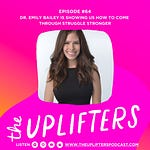
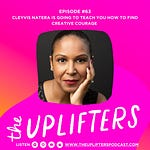

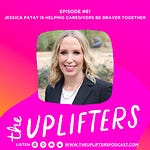
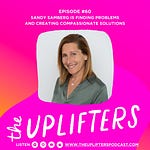

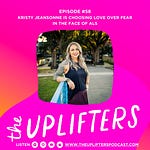
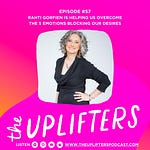
Share this post